The archival documents can tell us a lot about The Unity, but not everything. What did The Unity actually look like? Where exactly were the enslaved Africans held on board? The Zeeland Archives have commissioned a three-dimensional model using information from the archival documents and other sources. The results show that the available space for the enslaved Africans was incredibly limited. A voyage such as that of The Unity would be unimaginable in our time.
In order to create this reconstruction of The Unity information was gathered from a variety of sources: the archives of the Middelburgse Commercie Compagnie (MCC), valuable help from ship’s carpenter Jaap Luiting, and data extracted from existing literature on the MCC, ship’s models, prints, drawings and paintings. Another important source were the 18th century drawings of a very similar French ship. The 3D-drawing was created by DPI Animation House in The Hague.
The result is a 3D model which vividly shows how very cramped the slave quarters were. It also shows the exact location of the enslaved Africans on board, and various crucial modifications which the ship underwent to be able to transport them. The model does not aim at complete accuracy, but does give a good visual indication. The ship in motion can be watched in the following animation.
Old measurements
Measurements of that time consisted of ‘feet’ and ‘thumbs’, similar to inches, the length of which differed per province, area, and even city. Fortunately the records of The Unity note that Amsterdam measurements were used. The units of measurement of The Unity:
- Length 79 feet and 9 inches / 22,6 meters
- Width 24 feet and 9 inches / 7 meters
- Depth 11 feet and 4 inches deep / 3,2 meter deep
- Height ‘tween deck 4 feet and 9 inches / 1,4 meter
- Volume 60 ¾ lasten (old Dutch ton) / 170 meter³
The truss piece
The basic measurements of the ship do not give a lot of information on the curve of the hull. The collection of the Nautical Museum in Amsterdam contains a drawing of the truss piece of an 18th century snow ship similar in size and age. Data from this drawing was used to construct the 3D-drawing of The Unity.
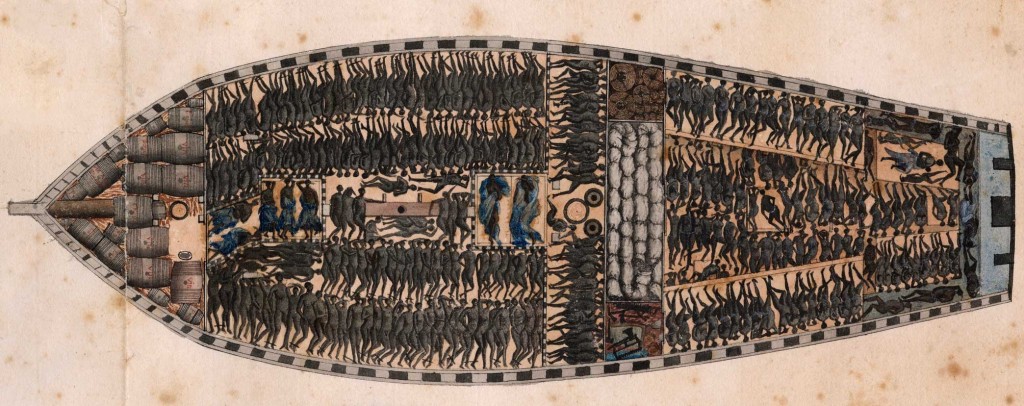
‘Tween deck of the ship La Marie-Séraphique
Detail from a drawing of the ship La Marie-Séraphique from Nantes, France. © Château des ducs de Bretagne – Musée d’histoire de Nantes, Alain Guillard.
A Slaver From France
Another ship which was similar to The Unity is La Marie-Seraphique, from Nantes, France. Unique drawings have been preserved from this ship, which give a lot of insight into the internal construction of the ship. The data drawn from this source are similar to the guidelines of the Zeeland ship’s surgeon Gallandat. The drawings are part of the collection Musée d’Histoire de Nantes, Château des Ducs de Bretagne, Nantes, France.
Zeeland Ship’s Surgeon Gallandat
After the Zeeland surgeon David Henri Gallandat (1732-1782) had completed several triangular voyages on board a ship from Flushing, the Netherlands, he wrote guidelines for the slave trade. The guide was published in 1769 in Flushing, and titled ‘Noodige onderrichtingen voor de slaafhandelaren’ (Necessary Instructions for Slave Traders). The aim of this guide was to ensure the most optimal transport of the human cargo to its destination: the health of the slaves was essential for maximizing profits.
In his guide, Gallandat describes in which manner the captured Africans were held, and where on board. The men were held on the waist deck and the ‘tween deck below, and the women in the tent on the quarterdeck, and the ‘tween deck below. Gallandat:
“Most slave ships barely reach a length of 80 feet; a ship can therefore be divided into two sleeping areas.
- The ‘tween deck, suitable for holding the male slaves, is a room with a width and length of 24.3 and a depth of 5 feet. Bunks were made of plans in this square space, to serve as sleeping berths. Without these it would be completely impossible to accommodate 200 slaves in such a cramped space. Fresh air for the slaves enters through the fore hatch in front, and through the main hatch in the back. Both hatches are covered with a grid during the night.
- The quarterdeck, suitable for holding the women, is a room with a length and width of 18 and a depth of 7 feet. Using the berths, this space can be used to accommodate 150 women and children. Fresh air enters partly through 4 small air holes (which are usually so small that very little air can enter, in addition to the fact that one is usually forced to shut them with even a little wind); and partly through the aft hatch, which is covered by a grid during the night. The air is mostly obstructed by a permanent wooden tent, built above the quarterdeck, even though this tent also contains a hatch which lies right above that of the quarterdeck.”
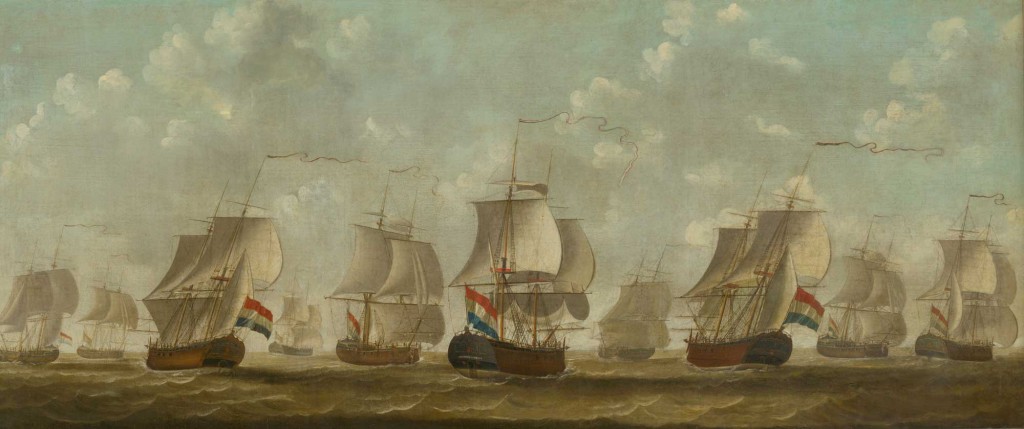
Painting with snow ships of the MCC
Painting with snow ships of the MCC, by Engel Hoogerheyden (1740-1807), Middelburg. Zeeland Archives, Middelburg City Hall Collection.
Painting of MCC ships
For the reconstruction of The Unity other ship’s models, prints, drawings and paintings in Dutch museums were also used. An example of the latter category is a painting of MCC snow ships. This painting is part of the city hall collection of Middelburg, managed by the Zeeland Archives. The work is attributed to the Zeeland artist Engel Hoogerheyden (1740-1807) and an old label on the back tells us that the painted ships are MCC ships. This is confirmed by the names of the three ships which remain readable: the Nieuwe Hoop (The New Hope), the Vigilantie (The Vigilance) and the Eenigheid (The Unity). This last ship is painted on the background of the painting, to the very right of it.
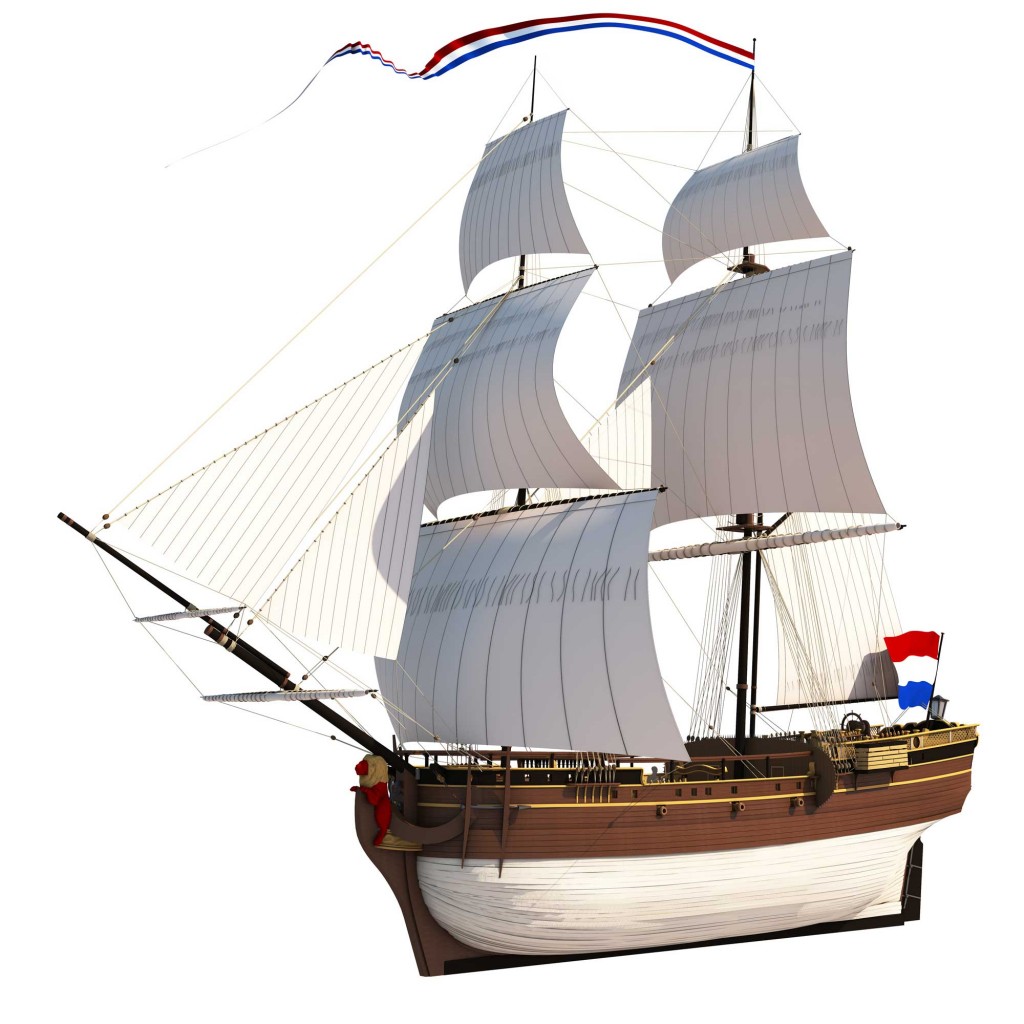
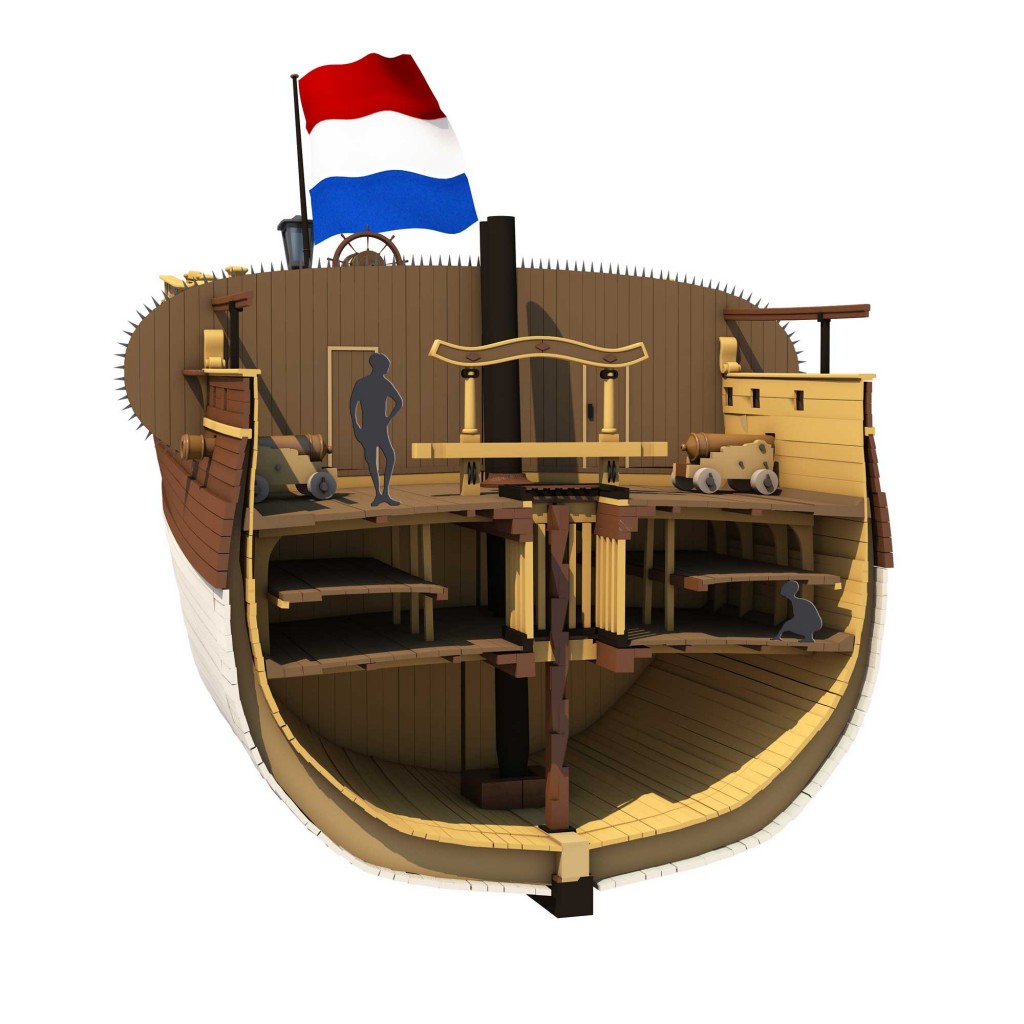
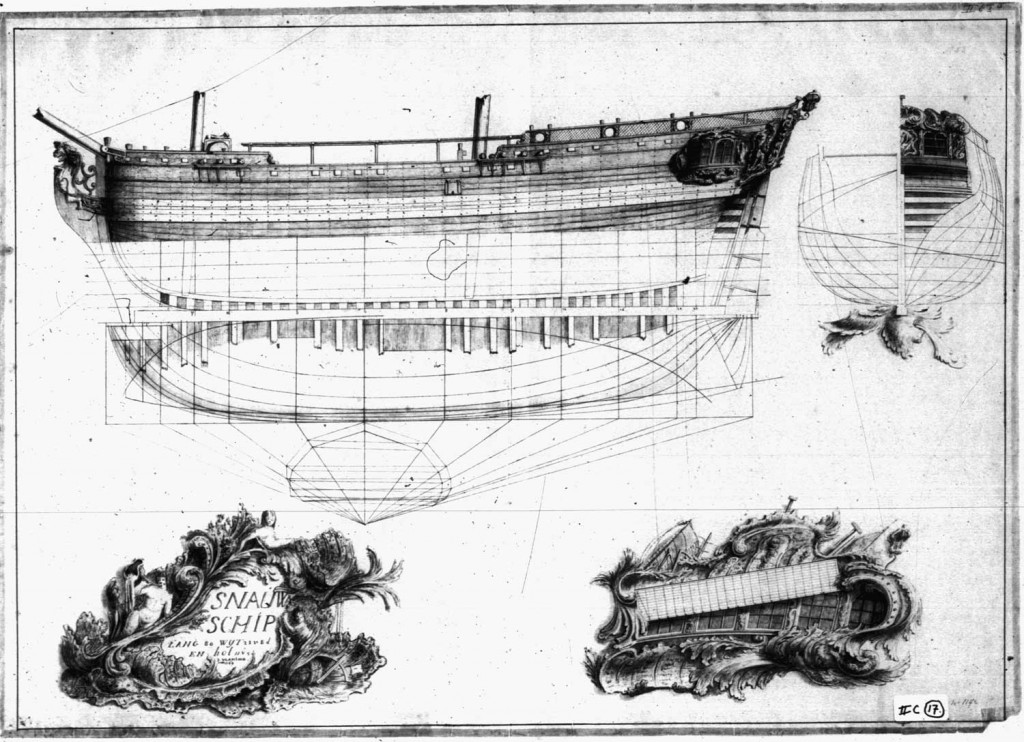
Truss-piece
Technical drawing or truss-piece of a snow ship. Collection Nautical Museum Amsterdam, T 022-13.
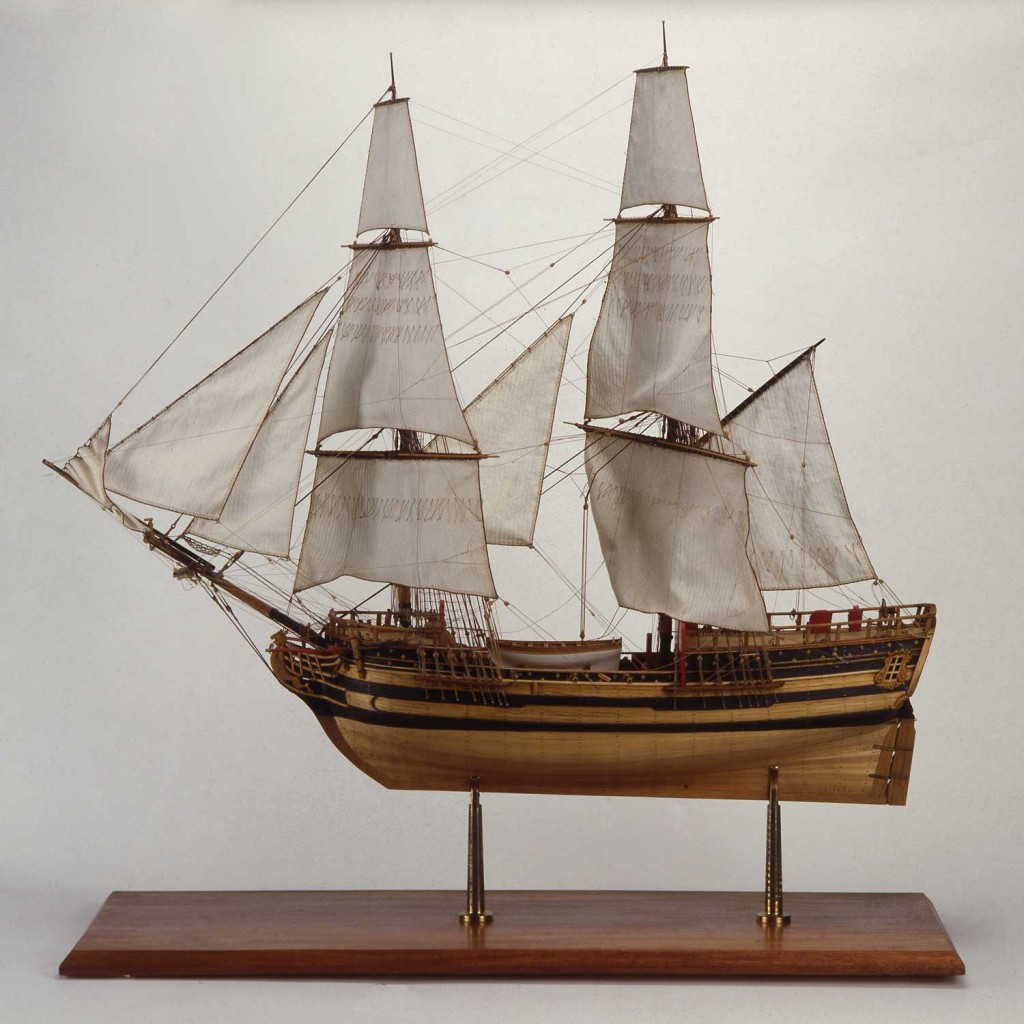
Model of La Marie-Séraphique
Model of the slave ship La Marie-Séraphique from Nantes, France. Model 20th century. © Château des ducs de Bretagne – Musée d’histoire de Nantes, Alain Guillard.
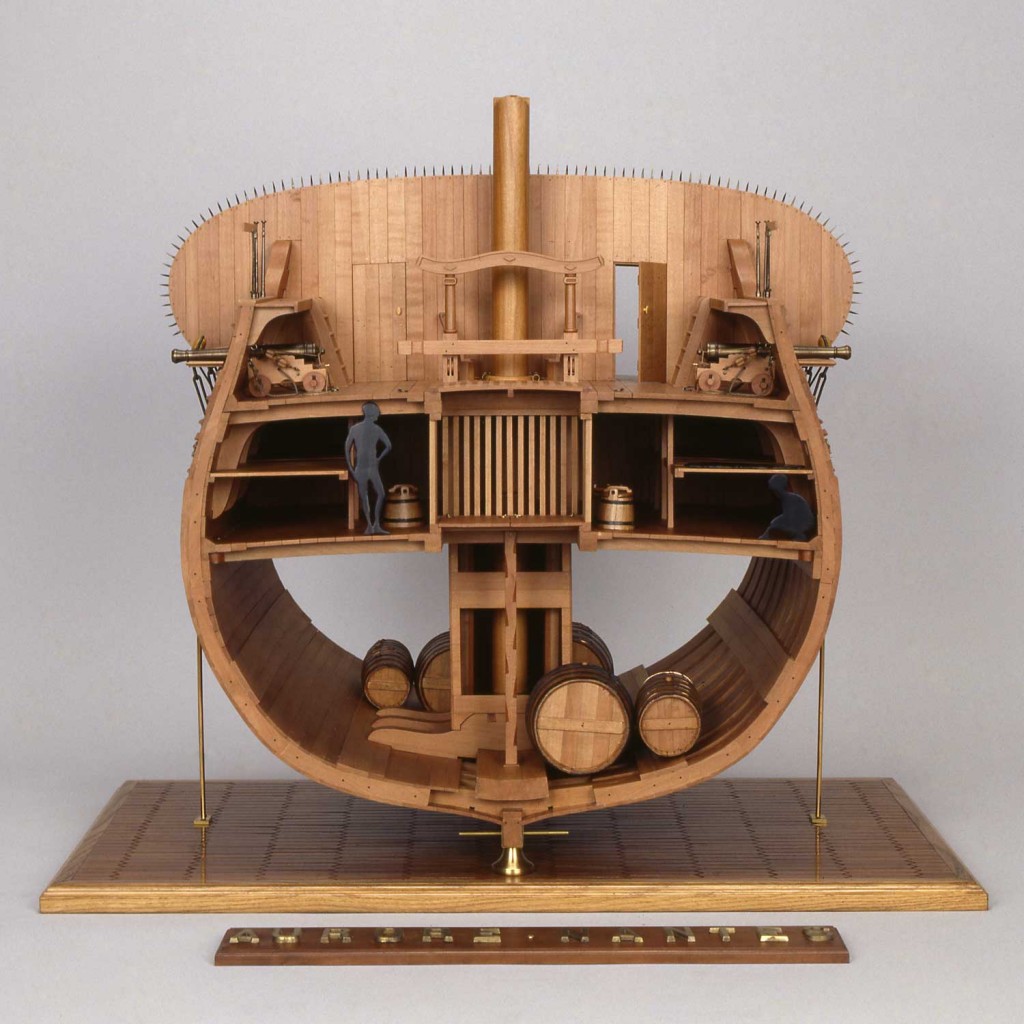
Cross-section with bunks on the ‘tween deck
Cross-section showing bunks on the ‘tween deck of the ship Aurora, France. Model 20th-century. © Château des ducs de Bretagne – Musée d’histoire de Nantes, Alain Guillard.
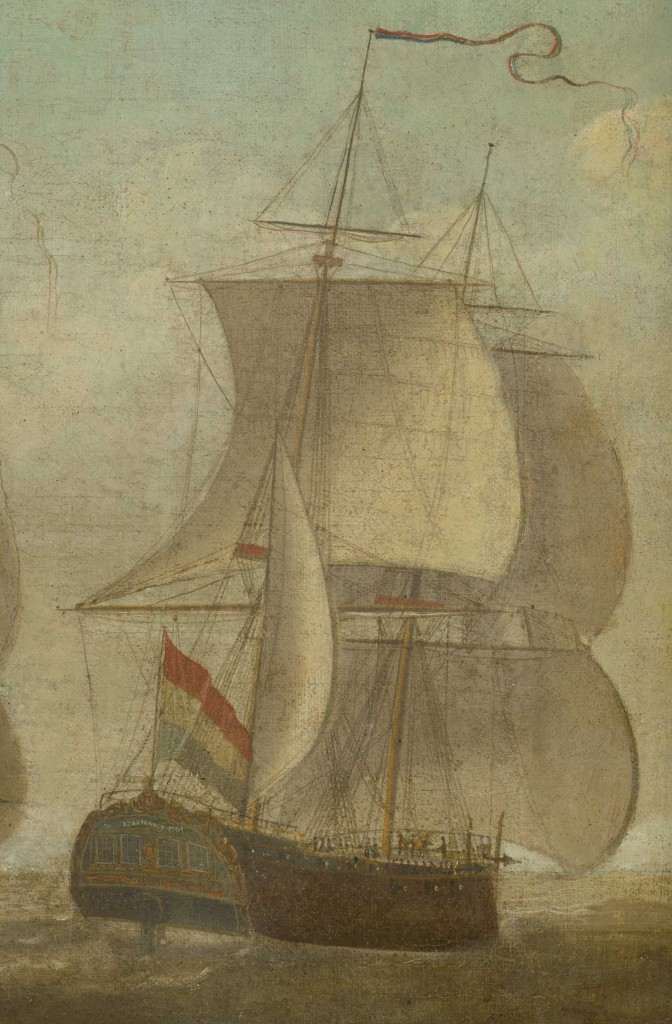
Snow ship The Unity
Snow ship The Unity, detail from a painting with snow ships of the MCC, by Engel Hoogerheyden (1740-1807), Middelburg. Zeeland Archives, Middelburg City Hall Collection.


